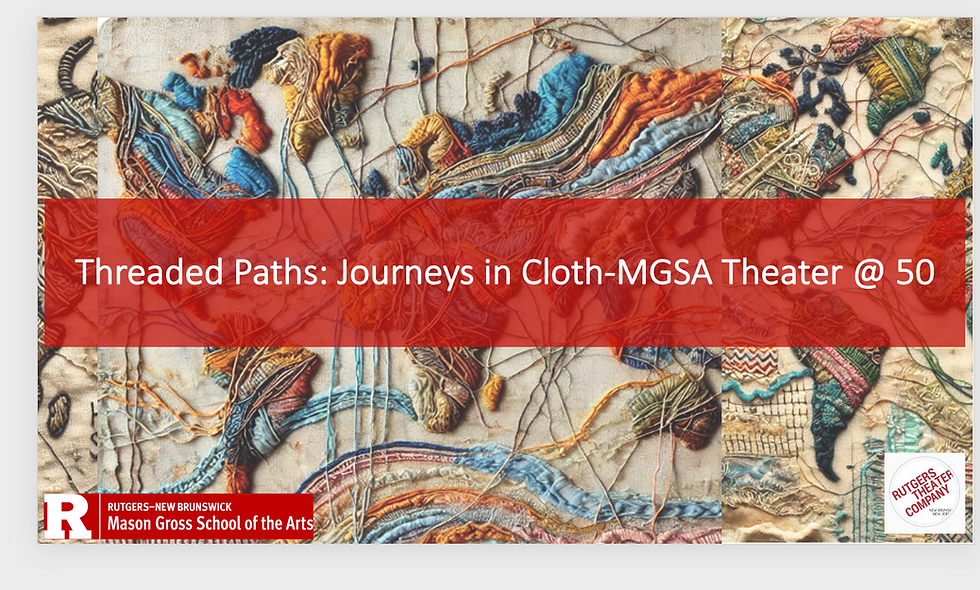Colors of Place – Part 2: Motifs,Decor, and Personal Heraldry Across Cultures
- vmramshur
- Nov 21, 2024
- 5 min read
"Every decoration on a garment or object is a statement, a shield, a prayer, or a celebration of identity."
— Peter Frankopan, The Silk Roads: A New History of the World
The holiday season brims with design motifs, surface decoration, and color that evoke joy, tradition, and connection. In the Northern Hemisphere, symbols like snowflakes, christmas trees, and holly embody resilience, vitality, and nature’s fleeting beauty, while glowing stars and vibrant red holly berries counter winter’s darkness with warmth and light. Decorations such as candles, lanterns, and wreaths celebrate hope and the triumph of light over darkness.


South of the equator, December’s summer backdrop contrasts with the adoption of these wintry motifs, creating a unique blend of traditions. Snowflakes mingle with summer blooms, and christmas trees share space with tropical foliage, reflecting the adaptability of holiday symbols as they traverse borders and climates, retaining their core meanings while evolving in new contexts.
These migratory motifs reflect our shared longing to infuse the season with beauty and significance. Yet, beyond their universality, these symbols often ground us in a deeply personal narrative. In exploring design motifs across cultures, I’ve been struck by how these symbols act as a kind of personal heraldry—a visual language of identity that reflects not just collective traditions but also individual stories. Just as a family crest or coat of arms communicates lineage and allegiance, the motifs we choose to adorn ourselves, our homes, or our traditions tell the story of who we are and where we come from.
Religious Geometry and Cross-Cultural Connections
Geometry in textile design often carries profound spiritual and cultural significance, connecting individuals to their beliefs and communities. Standing in Antonia Rusković Radonić’s ‘AR’ atelier silk production and embroidery workshop (more on her soon) in Gruda, a small village in the Konavle region of southern Croatia, I was struck by the meticulous language of embroidery on a local garment. Vivid red threads danced in geometric patterns on collars and cuffs, incorporating subtle crosses that seemed to hum with stories of devotion and resilience. These designs, rooted in the agrarian Catholic community, transcend decoration—they act as a form of heraldry, a way to visually express faith, protection, and belonging.
Similarly, in Turkey, geometric motifs such as the eight-pointed star (Rub el Hizb) reflect aniconic Islamic art traditions, emphasizing cosmic harmony and spiritual balance. These patterns, often woven into carpets or kilims, function as a kind of personal or familial heraldry, grounding individuals in their cultural identity while connecting them to universal human desires for order and spirituality.


Venetian brocades bring this concept of heraldry into a more opulent, layered realm. The scrollwork and arabesques, often shimmering with gold and deep crimson, reflect Venice’s historical role as a bridge between East and West. These patterns, heavily influenced by Islamic art yet reinterpreted through Renaissance aesthetics, tell a story of cultural synthesis. They are not merely decorative; they are Venice’s coat of arms in silk, communicating wealth, faith, and a cosmopolitan identity.
Nature Motifs: Flora and Fauna as Symbols of Identity
Nature has always served as a universal source of inspiration in textile design, with flora and fauna acting as symbols that connect people to their landscapes and heritage. In the Konavle region of Croatia, embroidered vines and grape clusters symbolize fertility and vitality, while the use of red threads conveys protection and energy. These motifs are deeply tied to the agrarian rhythms of the region, acting as both collective and personal heraldry—visual emblems that tell the story of a community rooted in its natural world.



In Turkish textiles and ceramic tiles, tulips, carnations, and pomegranates take on a similar role. The tulip, often associated with paradise and perfection, was a central motif in Ottoman culture, while the pomegranate, with its vibrant red seeds, symbolized fertility and abundance. As these motifs traveled through trade and cultural exchange, they became markers of identity, carrying the essence of their origins while adapting to new contexts.


Venetian textiles reflect a different but equally layered relationship with nature. Pomegranates, acanthus leaves, and fantastical creatures such as lions appear in Venetian brocades and damasks, blending classical Mediterranean influences with the city’s cosmopolitan identity. These motifs, like the others, act as heraldry—not for individuals, but for a city that celebrated its role as a hub of artistic innovation and cultural exchange.

The Migration of Symbols and Personal Heraldry
One of the most fascinating aspects of surface design is its ability to travel, both physically through trade and migration and metaphorically through shared human creativity. For example, the tulip, originating in Turkey, became a symbol of refinement and wealth in European art. Similarly, the geometric patterns of Islamic art inspired Venetian weavers, who incorporated them into luxurious silk brocades.

Within these migrations of motifs lies a shared human desire to craft identity through visual storytelling. The protective red threads of Croatian embroidery, the geometric balance of Turkish kilims, and the layered patterns of Venetian textiles each reflect a unique place and culture. Yet, they also share common threads, illustrating how textile design serves as both a personal and collective heraldry, articulating connections across time and space.


At its core, this idea of personal heraldry invites us to consider how the motifs, colors, and patterns we surround ourselves with reflect our own stories. What symbols resonate with your identity, your heritage, or your memories of a particular place? A favorite tartan might recall family roots in Scotland; a tulip motif might evoke a cherished journey to Istanbul. These designs, much like a coat of arms, allow us to visually declare who we are and what we value. In a future post I will unpack the concept of personal heraldry, exploring what it is, how it finds relevance in contemporary culture, and its role in visual storytelling.
.
Surface Design as Storytelling

Surface design is far more than aesthetic embellishment—it is a form of storytelling, a way to articulate the connections between identity, place, and cultural memory. In exploring these motifs, we uncover not just patterns on cloth but the intricate, interwoven threads of human connection. From Croatian embroidery to Turkish kilims to Venetian brocades, each design tells a story of faith, resilience, and creativity. In exploring these visual languages, we don’t just connect to the past—we create new chapters, new narratives in the fabric of human experience.
- Val
"Motifs and symbols in design are the universal language of humanity, speaking across borders and centuries to convey identity, memory, and belief."—
John D. Barrow, The Artful Universe
Question to Answer Below In Comments:
What would your personal heraldry look like? What colors, symbols, or patterns define your story?










"human desire to craft identity through visual storytelling" Is such a powerful statement that really resonates with me. Another fantastic read about the relationships between color, the environment and the human experience across nations, thank you Val! I think if I were to have personal heraldry, I would incorporate my favorite colors: green, purple, brown, and symbols that inspire me: sunflowers, stars... Feeling inspired to create such a textile after this read!